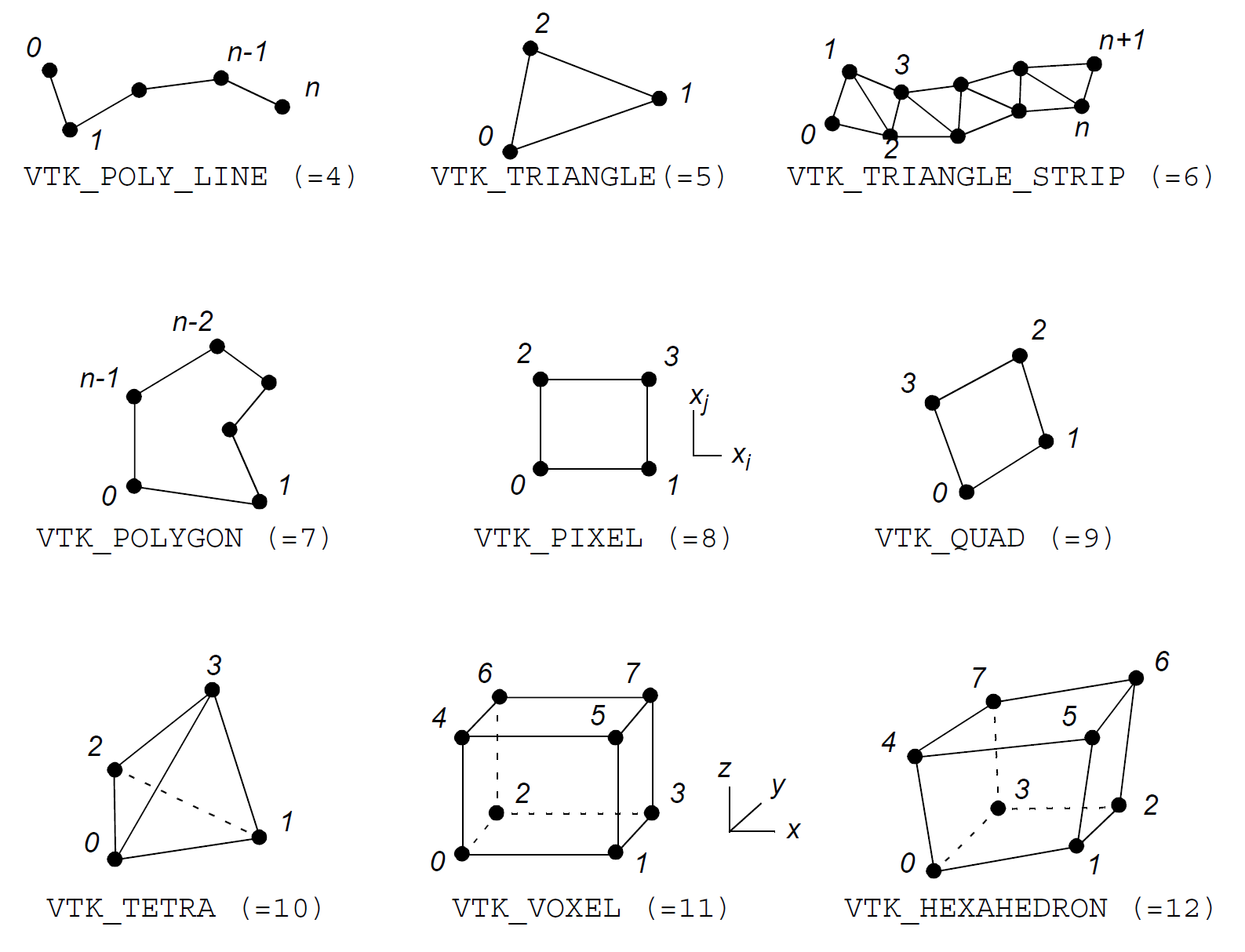🔬 RESEARCH¶

Yi’s current research is mainly on structure-preserving/mimetic numerical methods, and, in particular, the mimetic spectral element method (MSEM).
Structure-preserving/mimetic numerical method¶
To explain the structure-preserving/mimetic numerical method, we take the Poisson equation as an example. The Poisson equation is an elliptic partial differential equation of the form
where and
are both scalar fields and
refers to a material property.
If we introduce an intermediate variable
, the Poisson equation can be broken
down into a mixed formulation written as
These two equations reveal two structures embedded by the Poisson equation,
a constitutive relation and a topological relation.
For example, if the Poisson equation is used to model a heat diffusion problem, the first relation, namely the
gradient relation, then represents a constitutive law, the Fourier’s law, which relates the heat transfer rate,
, to the temperature,
,
subject to a material property
, the thermal conductivity of the material.
And the second relation, the divergence relation,
simply implies the fundamental conservation law of
energy, i.e., that the local net heat flux must be equal to the heat generated
or absorbed by the source term,
.
As a second example, if the Poisson equation models a potential flow in porous medium, the gradient relation then
represents a constitutive relation, the Darcy’s law,
which relates the flow velocity field,
, to the flow potential,
, subject to a
material property
, the permeability of the medium. And the divergence relation reflects the fundamental
conservation law of mass stating that the local net mass flux
is equal to the mass generated or absorbed by the source term,
.
Apart from the constitutive and topological relations, there are other structures,
like the symmetry and invariants, embedded in
the partial differential equations (PDEs).
For a particular problem, it is generally difficult to find the analytical solution of the PDEs.
An alternative approach is conducting a simulation with a numerical method to find an approximate solution.
Common numerical methods can be classified into finite difference methods (FDM), finite volume methods (FVM) and
finite element methods (FEM).
For example, given a well-posed Poisson problem in a porous medium, using the conventional first order
finite element method, we can find a numerical solution of the velocity field
, denoted by
, i.e.,
which is a linear combination of piece-wise linear functions.
However, if we check the conservation of mass for the
numerical solution , we will find that it is only satisfied approximately, i.e.,
where we have assumed that there is no source term anywhere, namely .
The exact conservation of mass,
, can only be approached
when we refine the simulation to the limit,
which is not feasible because of the limited computational power.
We can interpret this by saying that
artificial mass is generated during the numerical simulation.
In other words, the structure which prevents the unphysical artificial mass,
the conservation of mass embedded by the relation
,
is not preserved by the numerical method.
Unlike the classic numerical methods, while seeking the numerical solutions, a structure-preserving or mimetic method also aims at maintaining one or some structures of the PDEs at the meantime, and the mimetic spectral element method (MSEM), an arbitrary order spectral element method, is such a structure-preserving method.
For publications of Yi, click on 🖊️︎ PUBLICATIONS.
For talks given by Yi, click on 🎤 TALKS.
↩️ Back to Contents.
🏠️ Back to Math is cheap.
